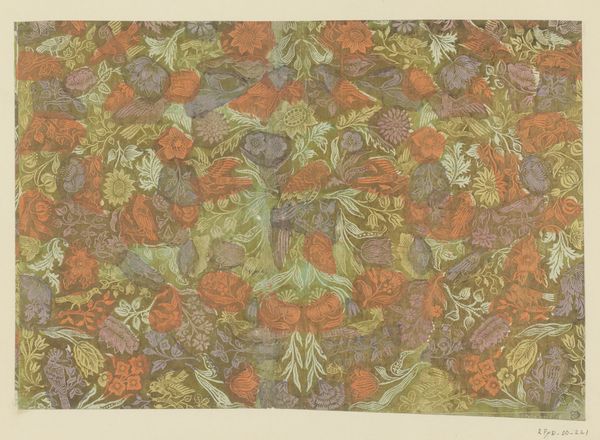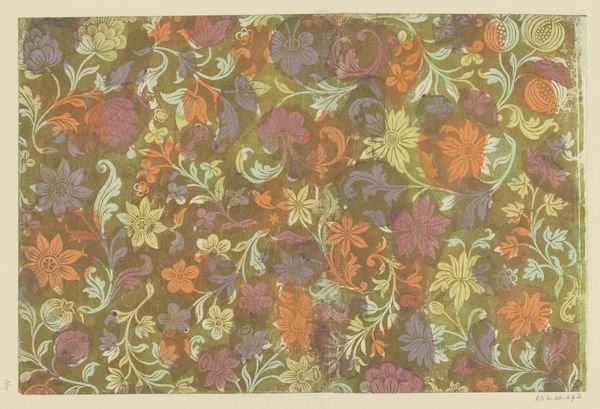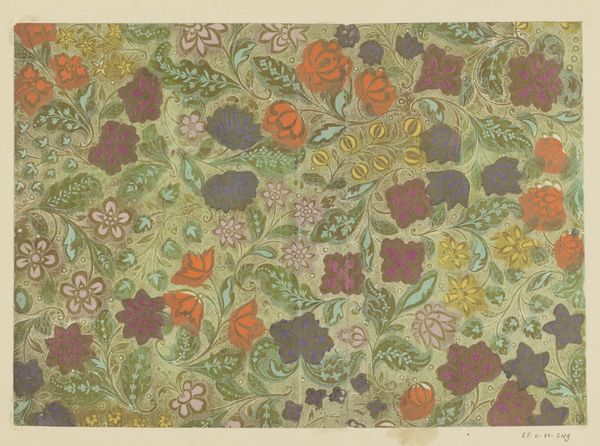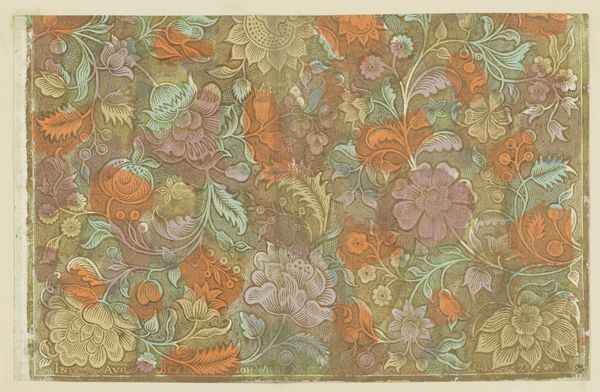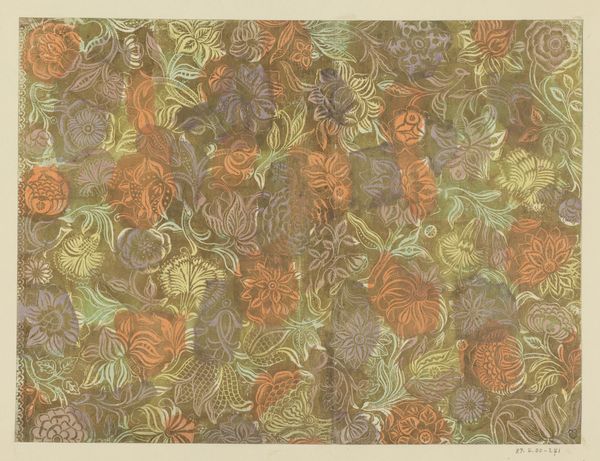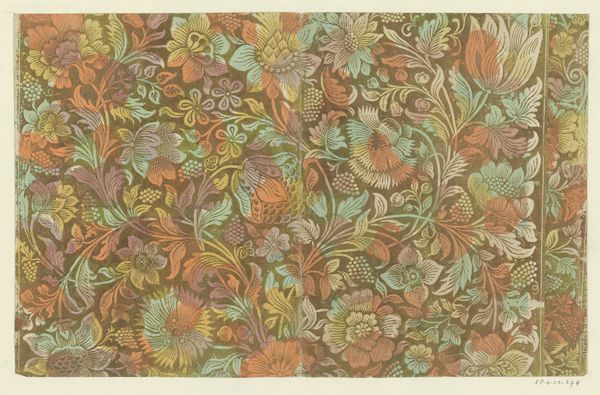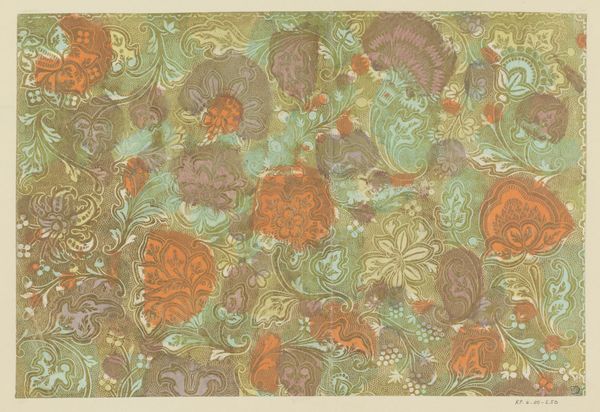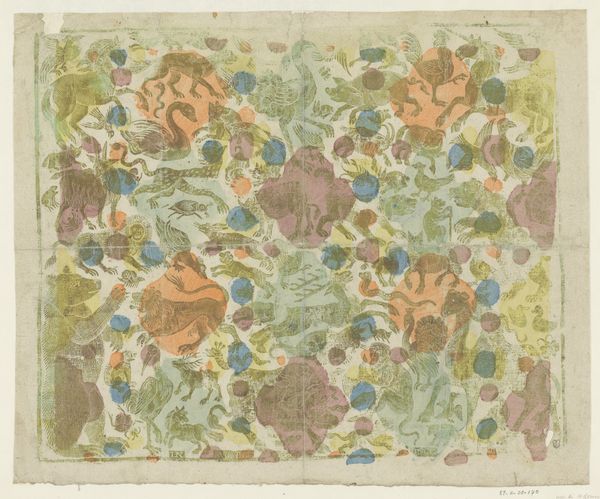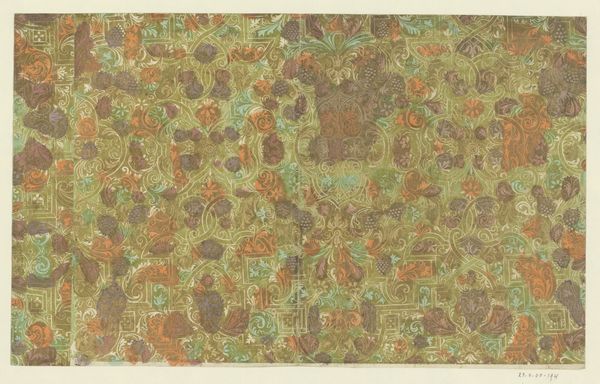
painting, watercolor
#
painting
#
watercolor
#
organic pattern
#
geometric
#
flower pattern
#
decorative-art
#
watercolor
#
rococo
Dimensions: height 260 mm, width 425 mm
Copyright: Rijks Museum: Open Domain
Curator: Let’s turn our attention to "Blad met bloemen," or "Sheet with Flowers," a watercolor by Marx Leonhard Kauffmann, created sometime between 1761 and 1772. Editor: It immediately strikes me as a dense, almost overwhelming, explosion of floral forms. The muted, earthy tones give it a slightly faded, antique feel, like gazing at aged wallpaper. Curator: The decorative arts saw a huge surge in popularity during this period. Images like these weren't necessarily intended as "art" in the high-art sense but served very practical purposes as inspiration for textiles, wallpapers, and ceramics. It points to a growing middle class eager for fashionable goods and patterns. Editor: Indeed. And speaking of pattern, there's a clear geometric undercurrent to this supposedly organic design. The way the blossoms and leaves are arranged feels very deliberate. We can see symbolism rooted in older traditions such as the Rose as symbol for love and the Poppy as symbol of remembrance. But also we might think how new markets drove production, with different regions adapting established patterns for local sensibilities and availability of material. Curator: I think you are on point to observe the symmetry; Kauffmann likely created this as part of a larger collection of model sheets meant to be adapted and replicated. The rococo style, with its love of curves and ornamentation, flourished in the decorative arts, injecting this artistic flair into everyday life. It shows this integration of art into society through applied designs. Editor: Even with its obvious ornamental function, I find the repeated floral motifs oddly comforting, almost meditative. It feels rooted, like a connection to the cycles of nature. Though it looks more to tapestries and rugs to me! It calls to mind cultural identity in craft and home décor as much as commerce. Curator: That's interesting. Looking through the lens of how people in that time consumed visual media allows for some novel points of inquiry. It speaks to this interplay between consumer desires, artist vision, and industrial capabilities that propelled artistic movements and trends during this time. Editor: Absolutely. It's about layers upon layers of interconnected meanings. Well, the language of floral patterns clearly evolves and intersects, and is anything but faded!
Comments
No comments
Be the first to comment and join the conversation on the ultimate creative platform.

